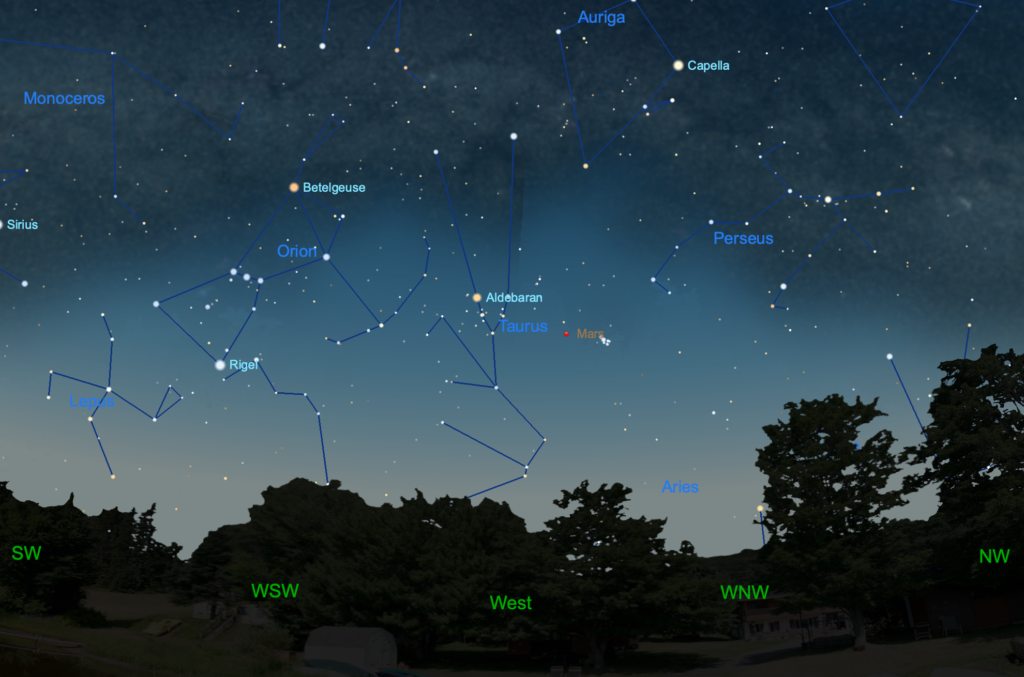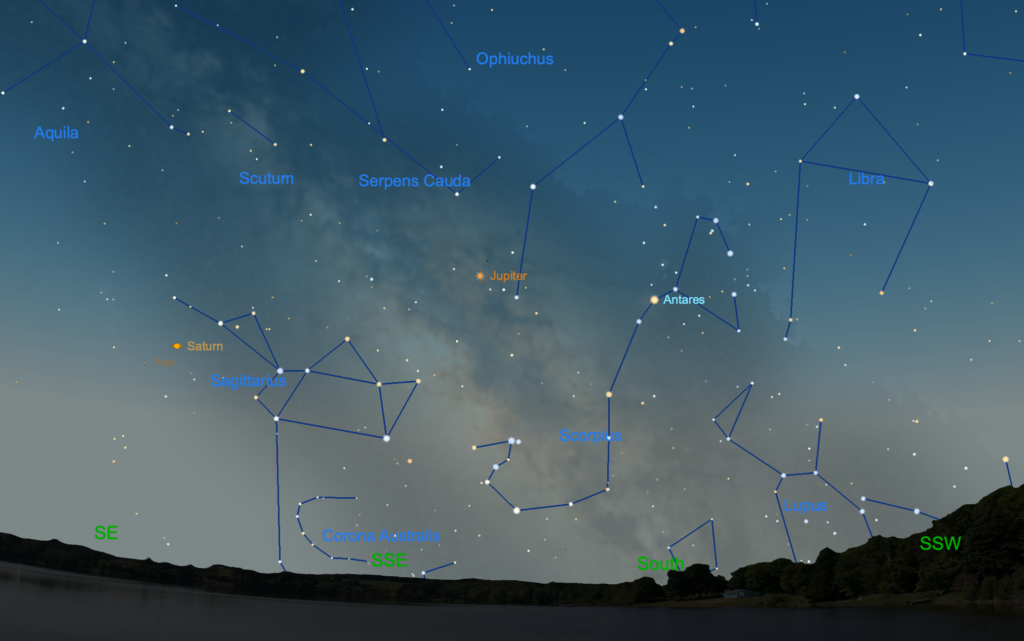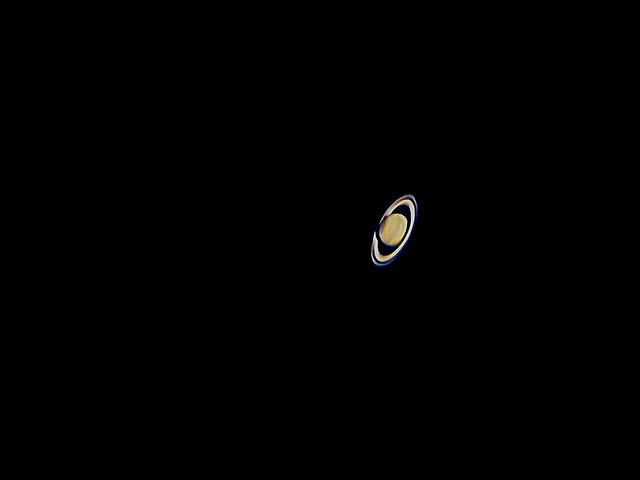As April rolls in, the brilliant constellations Taurus, Orion, and Canis Major turn to the west after sunset and are on their way out for the year. Jupiter and Saturn slowly move westward each night in the east-southeast on their way to opposition in a couple of months; both planets become visible well after midnight. Venus and Neptune make a close approach in the pre-dawn sky, while Mars passes through the stars of the constellation Taurus in early evening at the beginning of the month. And a respectable meteor shower comes to pass, although the light of the moon gets in the way. Here’s what to see in the night sky this month…
1 April 2019. Look for the planet Mars near the Pleiades and among the stars of Taurus for the next several days.
2 April. Look for a slender crescent Moon and the planet Venus low in the east-southeastern sky before dawn.
5 April. New Moon, 08:50 UT.

8 April. The Moon is back for another cycle, and its waxing crescent appears along with the star Aldebaran, the planet Mars, and the Pleiades star cluster in the northwest after sunset.
10 April. Jupiter begins its retrograde motion, appearing to move westward each night against the background stars in the constellation Ophiuchus. The planet reaches opposition in two months, and it continues to brighten and grow fatter. The planet shines brilliantly at magnitude -2.4 in the southeastern sky well after midnight until dawn. In a telescope, the disk spans about 40” and easily reveals atmospheric detail in steady sky. The planet will put on a great show in the coming months, although its southerly location along the ecliptic favors southern-hemisphere stargazers this year.

10 April. The planet Neptune, now an object in the early-morning sky, appears just 1/3o north of Venus in the east-southeast. Dawn’s glow will make it a difficult target in a telescope, but if you’re up and about, it’s worth a try!
11 April. Mars comes within 7o (about four finger widths) of the orange star Aldebaran in the constellation Taurus. The colors of the two objects are similar, but Aldebaran outshines the planet by nearly a full magnitude. Mars has been prominent in the sky for more than a year now, but it continues to fade and move westward, setting about 3.5 hours after the Sun by the end of the month. In a telescope, the planet is tiny. Despite its increasing distance, Mars still shines relatively bright at magnitude +1.6.
12 April. First Quarter Moon, 19:06 UT
19 April. Full Moon, 11:12 UT
21-22 April. The Lyrid meteor shower peaks. Look for meteors that trace their apparent paths back to a point between the constellations Hercules and Lyra, both of which rise in the east around midnight. You can see these meteors at any time of night, from nearly anywhere on Earth, but you may have more luck after midnight as the Earth turns into the meteor stream and the first quarter Moon sets. The shower typically produces 15-20 meteors per hour, but some years have yielded surprise outbursts of several hundred per hour. The Lyrids, which have been observed for at least 2,500 years, originate as the Earth passes through a stream of debris left by Comet C/1861 G1 (Thatcher). The light from the Moon gets in the way this year. But take a look: you may see many of the brighter Lyrids despite the sky glow.
22 April. The planet Uranus reaches conjunction with the Sun. The planet is lost in the Sun’s glare and will return in the coming weeks in the morning sky.
23 April. Jupiter lies about 1.5o south of the waning gibbous Moon in the late-night sky.
25 April. Look after midnight for Saturn less than half a degree north of the Moon.
26 April. Last Quarter Moon, 22:18 UT

29 April. Saturn begins retrograde motion, now moving westward against the background stars. The ringed planet finds itself in the southernmost reaches of the ecliptic in the constellation Sagittarius. It’s now an object for early-morning observers as it rises about 1 a.m. local time by the end of April. Saturn shines at magnitude +0.5 and spans about 17”, plenty big enough to let you get a glimpse of its rings in a small telescope.
